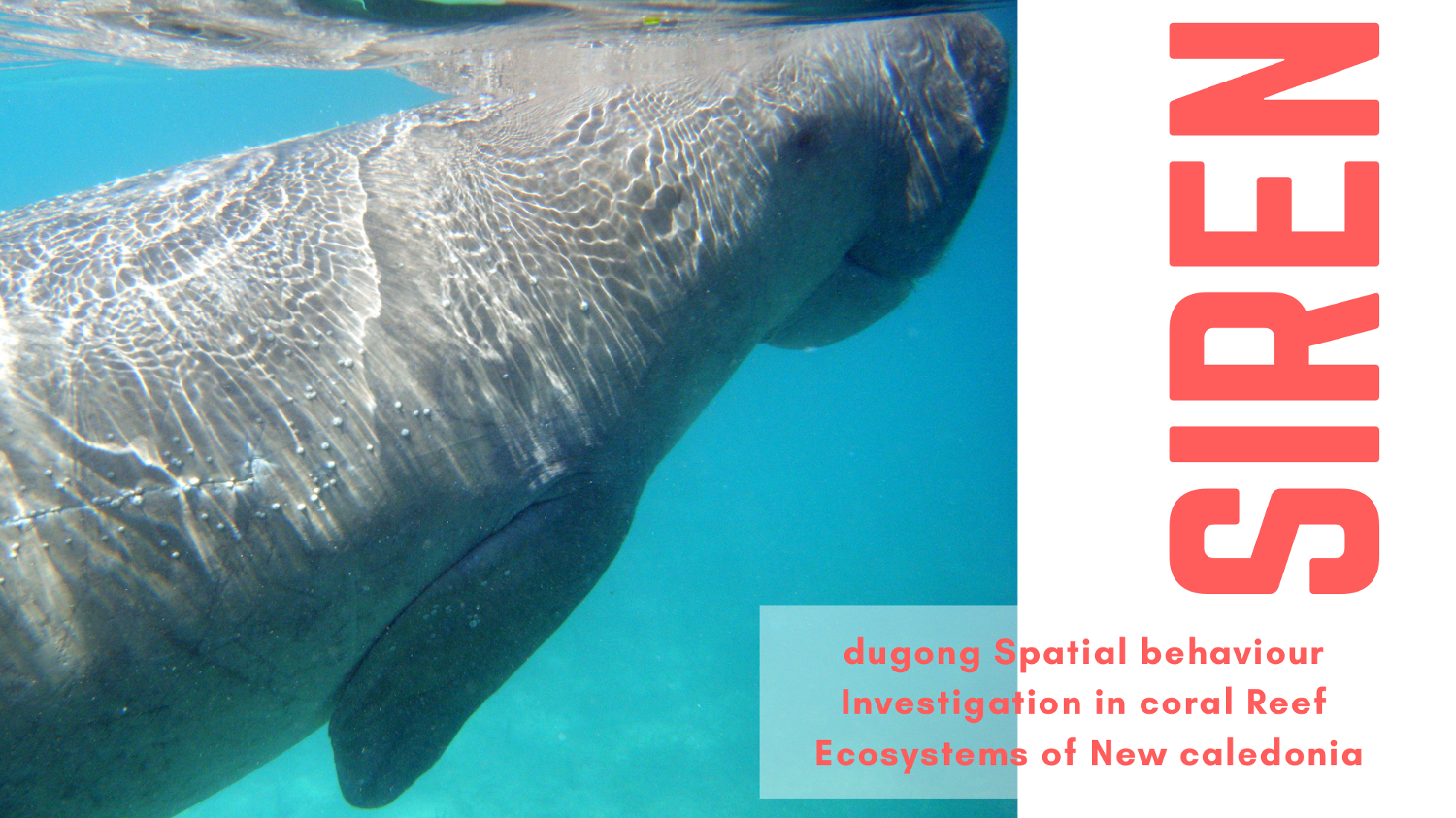SIREN Project
Dugong Spatial behaviour Investigation in coral Reef Ecosystems of New caledonia
Context
Dugongs (Dugong dugon) are an important component of tropical and subtropical coastal ecosystems and are internationally recognised as vulnerable to extinction by the IUCN. Dugong populations are at high risk of local extinction in several parts of their range. In New Caledonia the dugong population is estimated to be less than a thousand but it represents the largest concentration of dugongs in Melanesia and one of the largest populations in the world, outside Australia and the Arabian region. Genetic studies have highlighted the vulnerability of this population because of its low genetic diversity and isolation from the large dugong stocks in Australia.
A series of environmental monitoring programs were realised in the Voh-Koné-Pouembout area on the west coast of New Caledonia where where mining activities are conducted and overlap with dugong habitats. Several traditional manned aerial surveys were conducted to monitor the dugong population in the area. During these surveys, the entire lagoon of the Voh-Koné-Pouembout area was sampled before, during and after extensive dredging. The series of aerial surveys revealed a high use of the area by dugongs. However, the limitation in surveying technology at the time prevented to get a good understanding of the fine scale habitat use by dugongs in the area.
In this project, we will use some of the latest advances in survey methods involving drones, aerial imagery and artificial intelligence as well as animal tracking tools such as Quick fix GPS-satellite transmitters to refine our understanding of the distribution and movement behaviour of dugongs in the VKP area. We expect the project to enhance the conservation and management of this vulnerable species at the local and regional scale.
Objectives
- Identify and characterize the areas of the lagoon and habitats preferentially frequented by dugongs in the area near the Vavouto site;
- Investigate the effect of natural and anthropogenic parameters on the distribution and movement behavior of dugongs;
- Document the extent of movement of GPS-satellite tagged dugongs in and out of the VKP area.
PartEnAIrEs
- Christophe Cleguer, Murdoch University, Australie
- Helene Marsh, James Cook, University, Australie
- Andy Wright, KNS, Nouvelle-Calédonie
- IRD : UMR ENTROPIE
- Opération Cétacés


